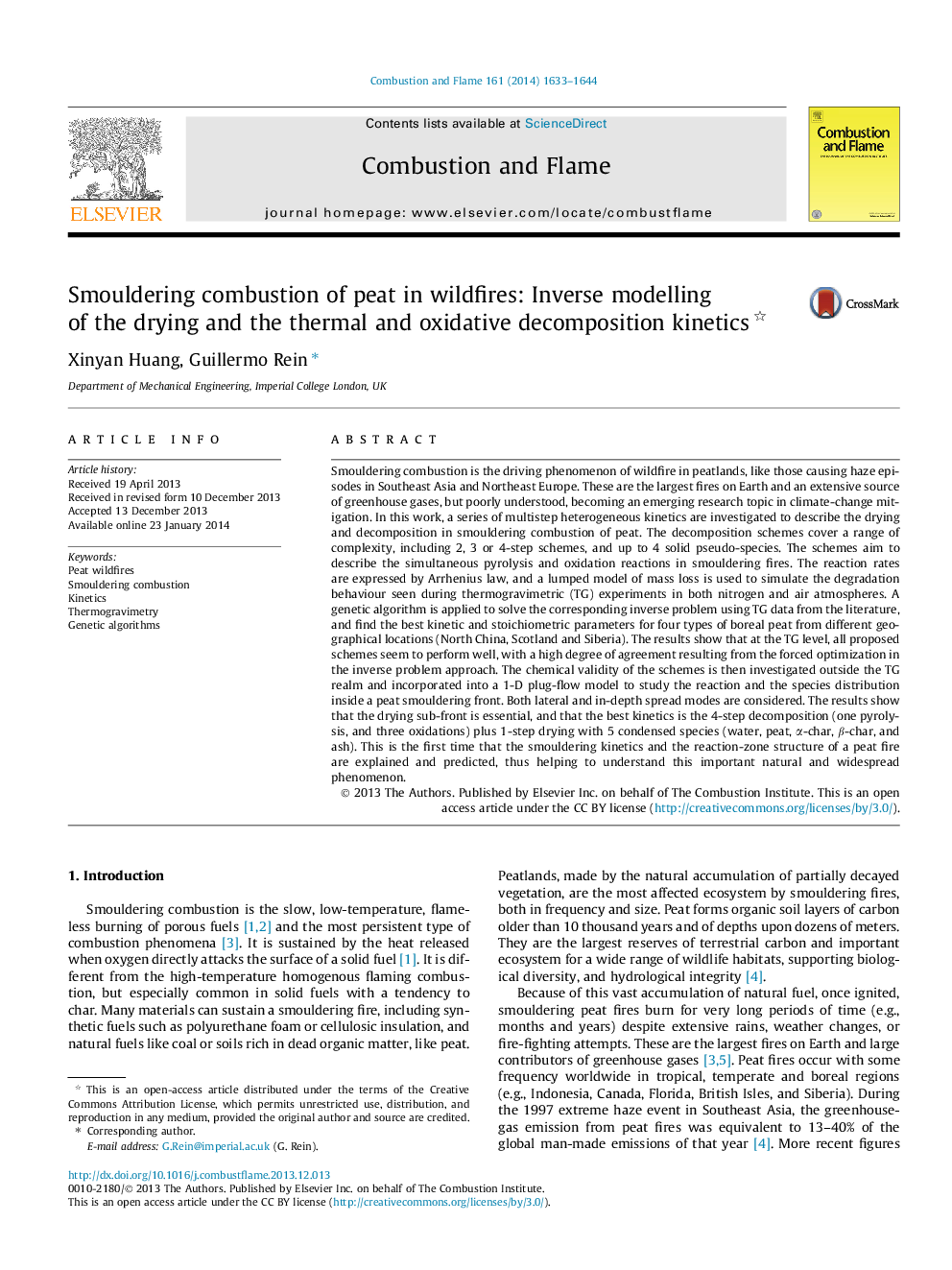| کد مقاله | کد نشریه | سال انتشار | مقاله انگلیسی | نسخه تمام متن |
|---|---|---|---|---|
| 10264662 | 457962 | 2014 | 12 صفحه PDF | دانلود رایگان |
عنوان انگلیسی مقاله ISI
Smouldering combustion of peat in wildfires: Inverse modelling of the drying and the thermal and oxidative decomposition kinetics
ترجمه فارسی عنوان
احتراق ذغال سنگ ذغال سنگ در آتش سوزی: مدل سازی معکوس خشک شدن و سینتیک تجزیه حرارتی و اکسیداتیو
دانلود مقاله + سفارش ترجمه
دانلود مقاله ISI انگلیسی
رایگان برای ایرانیان
کلمات کلیدی
آتش سوزی ذغال سنگ نارس احتراق گرمازدگی، سینتیک، ترموگرافی سنجی، الگوریتم ژنتیک،
موضوعات مرتبط
مهندسی و علوم پایه
مهندسی شیمی
مهندسی شیمی (عمومی)
چکیده انگلیسی
Smouldering combustion is the driving phenomenon of wildfire in peatlands, like those causing haze episodes in Southeast Asia and Northeast Europe. These are the largest fires on Earth and an extensive source of greenhouse gases, but poorly understood, becoming an emerging research topic in climate-change mitigation. In this work, a series of multistep heterogeneous kinetics are investigated to describe the drying and decomposition in smouldering combustion of peat. The decomposition schemes cover a range of complexity, including 2, 3 or 4-step schemes, and up to 4 solid pseudo-species. The schemes aim to describe the simultaneous pyrolysis and oxidation reactions in smouldering fires. The reaction rates are expressed by Arrhenius law, and a lumped model of mass loss is used to simulate the degradation behaviour seen during thermogravimetric (TG) experiments in both nitrogen and air atmospheres. A genetic algorithm is applied to solve the corresponding inverse problem using TG data from the literature, and find the best kinetic and stoichiometric parameters for four types of boreal peat from different geographical locations (North China, Scotland and Siberia). The results show that at the TG level, all proposed schemes seem to perform well, with a high degree of agreement resulting from the forced optimization in the inverse problem approach. The chemical validity of the schemes is then investigated outside the TG realm and incorporated into a 1-D plug-flow model to study the reaction and the species distribution inside a peat smouldering front. Both lateral and in-depth spread modes are considered. The results show that the drying sub-front is essential, and that the best kinetics is the 4-step decomposition (one pyrolysis, and three oxidations) plus 1-step drying with 5 condensed species (water, peat, α-char, β-char, and ash). This is the first time that the smouldering kinetics and the reaction-zone structure of a peat fire are explained and predicted, thus helping to understand this important natural and widespread phenomenon.
ناشر
Database: Elsevier - ScienceDirect (ساینس دایرکت)
Journal: Combustion and Flame - Volume 161, Issue 6, June 2014, Pages 1633-1644
Journal: Combustion and Flame - Volume 161, Issue 6, June 2014, Pages 1633-1644
نویسندگان
Xinyan Huang, Guillermo Rein,
